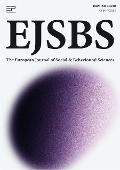
The European Journal of Social & Behavioural Sciences
Online ISSN: 2301-2218
European Publisher
Transfer of The Learning: Teacher Professional Development
Table 1: Synthesis of Catalysts and Barriers for TOT (Holton et al., 2000; Grossman et al., 2011)
| Factor | Definition |
| Perceived content validity and utility | Content reflects job requirements and is perceived to be useful |
| Transfer design | Learning environment is realistic/simulated and activities relate to job, modelling occurs, practice follows and it is understood how to transfer them to the job |
| Error management | In the PD/PL errors are anticipated and learners given approaches to deal with them |
| Opportunity to use learning | The individual has the resources and time to practice the new ideas (etc) on the job |
| Personal capacity to transfer | İndividual has time, energy and cognitive ability to make the changes |
| Motivation to learn and transfer | Individual is motivated to learn and to transfer the ideas (etc) |
| Effort is worthwhile | Belief that the effort will lead to improved performance |
| Expected performance outcomes valued | Performance outcomes would be valued by the individual and the organisation |
| Learner readiness | İndividual contributed ideas (etc) to the plan, aware of expectations and aware how the PD/PL related to work performance |
| Self-efficacy | Individual has personal belief in capacity to learn and transfer |
| Positive personal outcomes | İndividual receives rewards for transferring the learning (e.g., personal satisfaction, salary increase) |
| Negative personal outcomes | The use of the new learning leads to negative outcomes (e.g., reprimands, peer resentment) |
| Supervisor feedback/performance coaching | İndividual receives assistance to improve and feedback from work environment |
| Follow-up | After the formal PD/PL additional PDL should occur (e.g., relapse prevention, feedback, development of job aides) |
